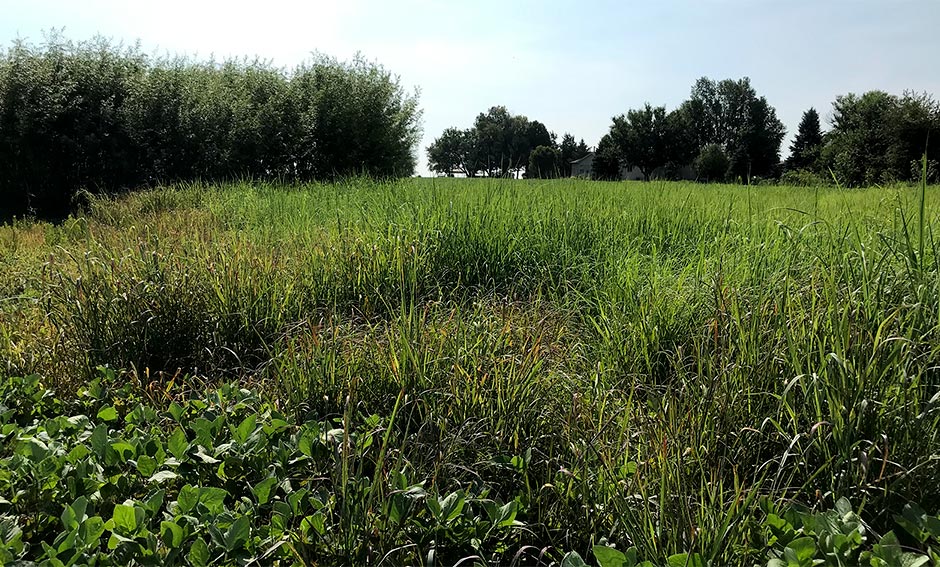Loading...
Economic Analysis and Ecosystem Service Valuation
The economics of strategically producing perennial bioenergy crops and the added value of including ecosystem services
Stepping into the Midwest Bioeconomy: Stakeholder Engagement and Geospatial Tools to Assist in Perennial Bioenergy Crop Decision Making and Entrepreneurship
- Kasberg, B., C. Zumpf, J. Quinn, M. Urgun Demirtas, M. Giacometti and S. Leick, 2025, Stepping into the Midwest Bioeconomy: Stakeholder Engagement and Geospatial Tools to Assist in Perennial Bioenergy Crop Decision Making and Entrepreneurship: Argonne Technical Report ANL/EVS-24/24, February, 24 pp. plus 77 pp. of appendices.
- Collaborated with American Farmland Trust to conduct workshops, webinars, and one-on-one technical assistance regarding the adoption of perennial bioenergy crops on marginal lands in the Midwest.
- Created the Midwest Bioenergy Crop Coalition to facilitate discussion and collaboration across a full range of stakeholders.
- Collected user feedback to refine Argonne’s geospatial tool, SUPERBEEST, for land use decision-making by those interested in the bioeconomy.
- Determined that farmers and landowners are interested in perennial bioenergy crops for large markets, with contracts and harvest operations similar to those of existing commodity crops. There is less interest in on-farm small-scale biomass energy infrastructure
- Concluded that non-energy related biomass end-uses, such as animal bedding, erosion control products, or other bioproducts may be a necessary near-term market opportunity for increasing crop familiarity for further investment in feedstocks needed by biofuel producers.
Impact of Landscape Design on the Greenhouse Gas Emissions of Shrub Willow Bioenergy Buffers in a U.S. Midwest Corn Production Landscape
- Canter, C.E., K. Zolton, J.F. Cacho, M.C. Negri, C.R. Zumpf, and J.J. Quinn, 2022, Impact of landscape design on the greenhouse gas emissions of shrub willow bioenergy buffers in a U.S. Midwest corn production landscape: Biofuels, Bioproducts, and Biorefining. https://doi.org/10.1002/bbb.2345
- Evaluates the sustainability of producing shrub willow buffers for bioenergy compared to corn production for ethanol.
- Compares greenhouse gas (GHG) emissions across three different willow production scenarios on marginal land in the Indian Creek Watershed.
- Reduced use of fertilizers, other chemicals and energy during shrub willow growth and ethanol production resulted in lower lifecycle GHG emissions compared to corn.
Integrated Strategies to Enable Lower-Cost Biofuels
- U.S. DOE, 2020, Integrated Strategies to Enable Lower-Cost Biofuels: U.S. Department of Energy, Office of Energy Efficiency and Renewable Energy, Bioenergy Technologies Office, DOE/EE-2079.
- Ecosystem services valuation plays a role in reducing the cost of biofuel production.
- Contributed material on integrated landscape management, ecosystem services and their valuation.
Valuation of Ecosystem Services in Alternative Bioenergy Landscape Scenarios
- Mishra, S.K., M.C. Negri, J. Kozak, J. Cacho, J. Quinn, S. Secchi, and H. Ssegane, 2019, Valuation of Ecosystem Services in Alternative Bioenergy Landscape Scenarios: Global Change Biology Bioenergy,11:748–762. https://doi.org/10.1111/gcbb.12602
- Estimated the value of six types of ecosystem services for an Illinois watershed (Upper Vermilion River) with marginal farmland converted to perennial switchgrass.
- Nitrate reduction had the largest value, based on a potential nutrient credit-trading scheme.
- Others in descending value were greenhouse gas emission reduction, erosion reduction, wildlife viewing, pheasant hunting, and water-based recreation.
- First known effort to quantify ecosystem service values comprehensively for a watershed.
The Economics of Growing Shrub Willow as a Bioenergy Buffer on Agricultural Fields. A case study in the Midwest Corn Belt
- Ssegane, H., C. Zumpf, M.C. Negri, P. Campbell, J. Heavey, and T.A. Volk, 2016, The Economics of Growing Shrub Willow as a Bioenergy Buffer on Agricultural Fields. A case study in the Midwest Corn Belt. Biofuels, Bioproducts and Biorefining, 10:776–789. https://doi.org/10.1002/bbb.1679.
- Examined the economics of growing shrub willow as a biomass source in buffer locations in the Indian Creek, IL watershed.
- Growing willow found to produce negative revenue, mainly due to land rental costs.
- However, when the nitrogen removal benefit is factored in and valorized, the net costs of willow are comparable to those of other conservation practices, and other ecosystem services are expected also.








